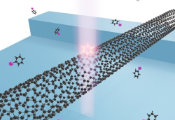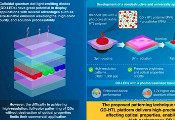Crypto Quantique, ZARIOT and Kigen Unveil Quantum-Safe Hardware Root-of-Trust for Cellular IoT
LONDON, 17th June 2024 -- Crypto Quantique, a leading provider of quantum-driven security for IoT and ZARIOT, an award-winning cellular IoT connectivity provider, have partnered with leading eSIM vendor, Kigen. This global partnership implements IoT-SAFE to leverage the Hardware Root-of-Trust of any SIM with native access to quantum-safe technology for the first time.
This radically changes the way enterprises can use SIM, eSIMs or iSIMs as a viable and available solution that works in tandem with Crypto Quantique’s market-leading solution to fully secure connections for authentication, encryption and service acceleration.
This is arguably more urgent and important than ever before as enterprises start acting to adopt resilient IoT security features through directives such as the EU Cyber Resilience Act. The timing of this partnership proves vital for the Cellular IoT industry’s ‘hyper-growth’, with some estimates putting the number of devices as exceeding 6 billion by 2028.
Crypto Quantique provides the embedded code baseline that can be deployed on a host microcontroller that utilises the IoT-SAFE applet provisioned on the SIM, giving cellular IoT native access to their security technology for the first time. This enables a fully secure connection between the device, Crypto Quantique’s QuarkLink IoT security management platform, and cloud service provider or data centre. By leveraging the Kigen IoT-SAFE applet, based on the GSMA standard, the SIM in any form factor will be used as a hardware root-of-trust.
Dr. Shahram Mossayebi, co-founder and CEO of Crypto Quantique says: “We are thrilled to join forces with ZARIOT and Kigen in this exciting new partnership. By using ZARIOT’s flexible connectivity tools, leveraging Kigen’s IoT-SAFE in a novel way on their certified eSIM technology, we are able to provide cellular IoT devices with a hardware root-of-trust, hugely raising the standard of IoT security that will protect device networks.”




































